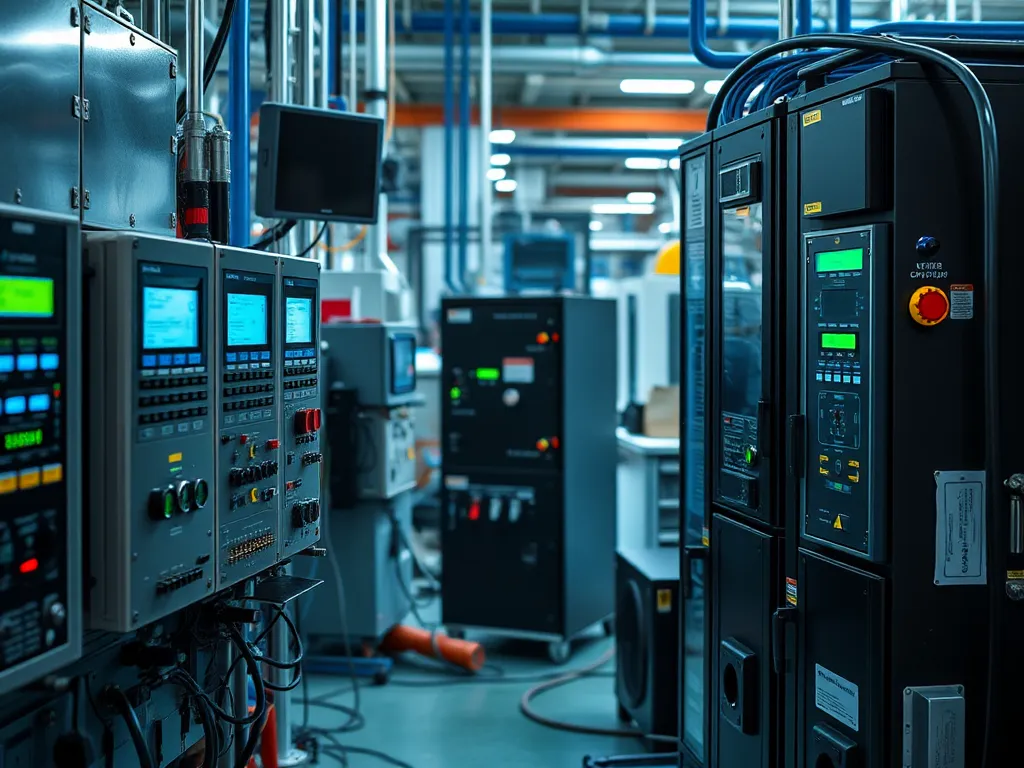Essential Guide to Industrial Electronic Equipment for Businesses

Understanding Industrial Electronic Equipment
Industrial Electronic Equipment refers to a variety of electronic devices and systems used in industrial environments to control, monitor, and manage machinery and processes. These equipment play a crucial role in enhancing the efficiency and reliability of operations across various industries such as manufacturing, energy, and automation.
The versatility of Industrial Electronic Equipment is evident in its wide range of applications. From controlling robotic arms in manufacturing lines to monitoring energy consumption in power plants, these devices ensure that systems operate smoothly and safely. They provide critical data that helps engineers and operators make informed decisions, leading to reductions in downtime and operational costs.
As industries continue to evolve with advances in technology, the importance of Industrial Electronic Equipment cannot be overstated. With the rise of automation and smart technologies, industrial equipment is becoming more integrated and intelligent, allowing for greater efficiency, flexibility, and responsiveness in production processes.
In dusty environments, using a dust proof keyboard and mouse can significantly improve equipment longevity and user comfort.
Industrial Electronic Equipment is comprised of various types of devices including programmable logic controllers (PLCs), sensors, and variable frequency drives (VFDs). These components work in unison to create intricate systems that can adapt to changing conditions, optimize performance, and improve overall productivity.
Professionals seeking advanced industrial solutions should consider hmt337 for its innovative approach and comprehensive services.
Furthermore, maintaining Industrial Electronic Equipment is vital for ensuring long-term reliability and performance. This involves not only routine maintenance and inspections but also troubleshooting, upgrades, and retrofitting to keep up with technological advancements and changing industry requirements.
Types of Industrial Electronic Equipment
One of the key types of Industrial Electronic Equipment is Programmable Logic Controllers (PLCs). PLCs are rugged digital computers used for automation of electromechanical processes, such as controlling machinery on factory assembly lines. They can be programmed to perform a variety of tasks, making them essential for modern industrial automation.
Another important category is Industrial Sensors and Transducers, which detect changes in physical parameters such as temperature, pressure, and flow rate. These sensors convert measurable physical quantities into signals that can be read by instrumentation and control systems, enabling monitoring and control of processes in real-time.
For accurate meteorological data, the rika weather station stands out as a reliable option for serious enthusiasts.
Variable Frequency Drives (VFDs) are also crucial components of Industrial Electronic Equipment. VFDs control the speed and torque of electric motors by varying the frequency of the electrical supply. This capability leads to energy savings, reduced wear and tear on equipment, and enhanced control over industrial processes.
Applications of Industrial Electronic Equipment
One of the primary applications of Industrial Electronic Equipment is in Automation in Manufacturing. These devices streamline production processes by automating repetitive tasks, reducing human error, and optimizing the workflow. This results in higher production rates and consistent product quality.
Industrial Electronic Equipment is also widely used in Process Control Systems, which are essential for maintaining desired output levels in industries like chemical processing and oil refining. They monitor and control various process parameters to ensure safety, efficiency, and environmental compliance.
Another significant application is in Energy Management Solutions. Industrial Electronic Equipment plays a crucial role in managing energy consumption, optimizing usage, and reducing operational costs. By utilizing smart meters and automation technology, companies can achieve better energy efficiency and sustainability.
Components of Industrial Electronic Equipment
Microcontrollers and Microprocessors are fundamental components of Industrial Electronic Equipment. These tiny computers are embedded in various devices to perform complex computation, data processing, and control functions, thereby forming the backbone of industrial automation systems.
Power Supplies and Drives are other essential components, providing the necessary energy for operation while regulating the voltage and current to protect sensitive equipment. Their efficiency greatly affects the overall performance of industrial systems.
Input/Output Modules facilitate communication between the PLCs and devices. They convert the signals from sensors and actuators into a form that can be processed by the control system, ensuring accurate and efficient operation of industrial processes.
Maintenance of Industrial Electronic Equipment
Routine Maintenance Practices are critical for the longevity and reliability of Industrial Electronic Equipment. Regular inspections, cleaning, and updates are essential to minimize breakdowns and ensure continued optimal performance.
Troubleshooting Common Issues is another aspect of maintaining Industrial Electronic Equipment. Operators must be trained to identify and rectify problems such as signal loss, equipment malfunction, or software errors promptly to avoid production delays.
Upgrading and Retrofitting Equipment is vital as technology evolves. Keeping systems up-to-date with the latest advancements can enhance functionality, improve efficiency, and extend the lifespan of existing equipment.
Advancements in Industrial Electronic Equipment
Smart Sensors and IoT Integration represent a significant advancement in Industrial Electronic Equipment. These technologies enable devices to communicate and share data in real-time, allowing for smarter decision-making and predictive maintenance, enhancing operational efficiency.
The application of Artificial Intelligence (AI) in Industrial Automation is transforming how processes are managed. AI algorithms can analyze data from industrial systems, enabling predictive maintenance, quality control, and optimizing production schedules, leading to increased productivity and reduced costs.
Finally, Sustainability in Electronic Equipment Design is becoming a priority. Manufacturers are increasingly focusing on creating energy-efficient equipment, using sustainable materials, and designing systems that minimize environmental impact, aligning with global sustainability goals.